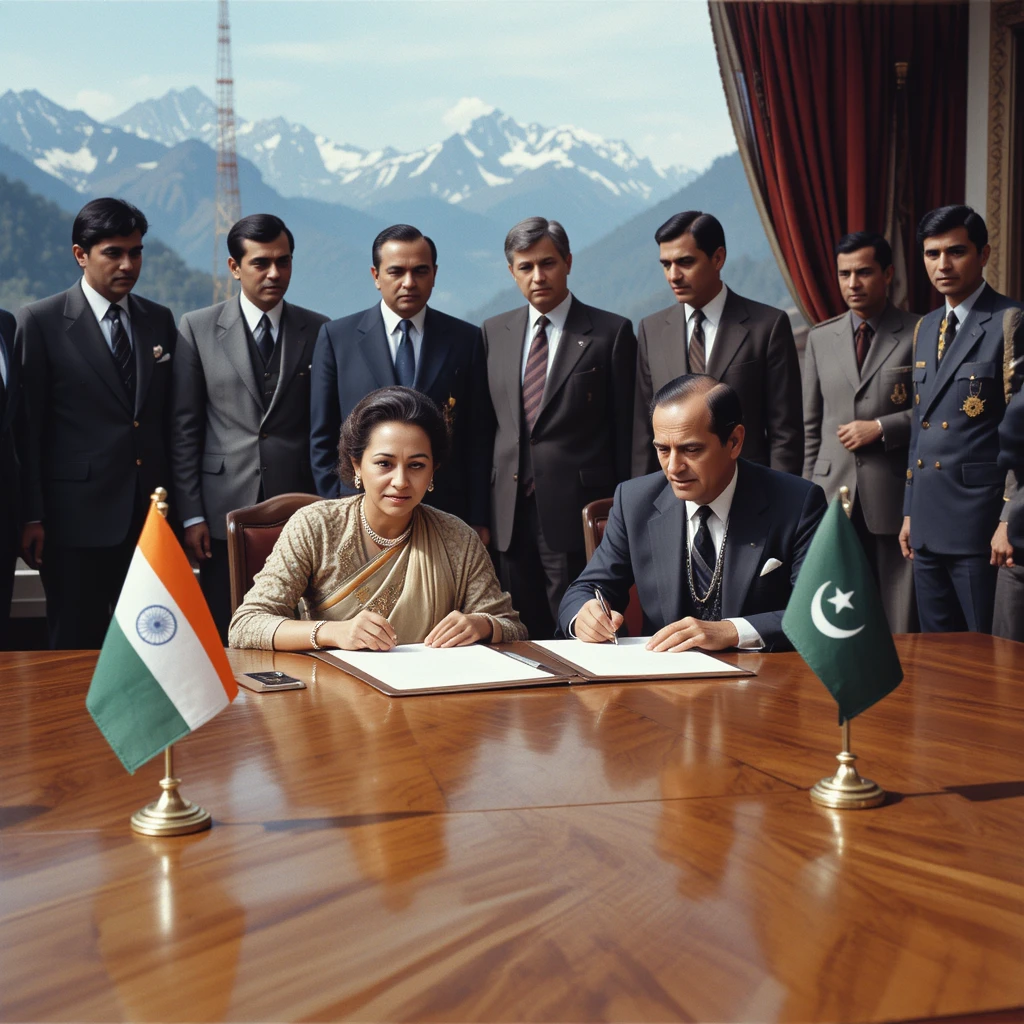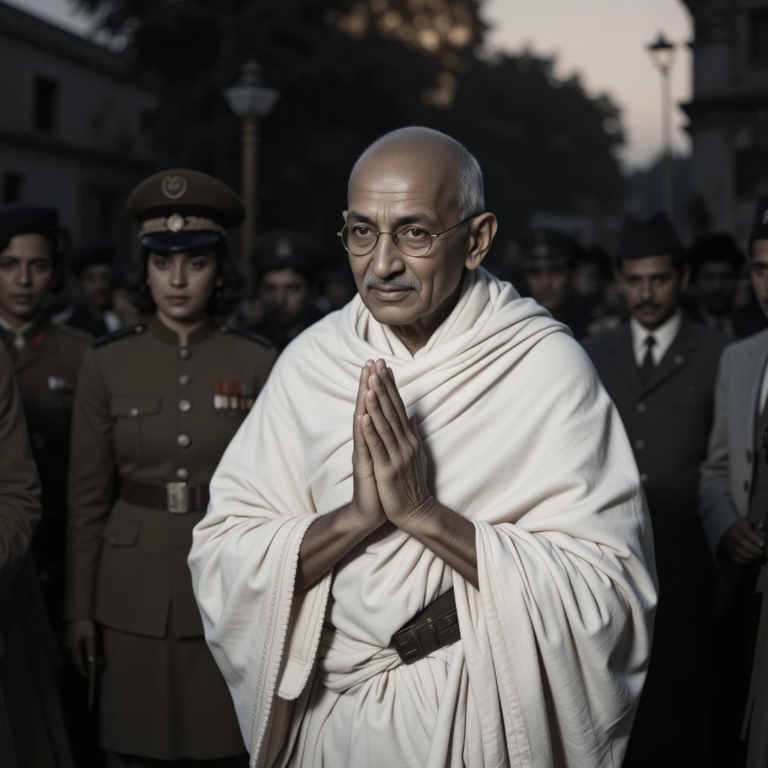Introduction

The Simla Agreement of 1972 stands as a pivotal moment in India-Pakistan relations, representing a diplomatic effort to stabilize South Asia after the 1971 Indo-Pakistani War. Signed on July 2, ව
Table of Contents
Historical Context of the 1971 War and the Simla Agreement
The 1971 Indo-Pakistani War
The Simla Agreement was a direct outcome of the 1971 Indo-Pakistani War, which fundamentally altered South Asia’s geopolitical landscape. The conflict stemmed from escalating tensions in East Pakistan (now Bangladesh), where the Pakistani military launched Operation Searchlight on March 25, 1971, to suppress Bengali nationalist movements led by Sheikh Mujibur Rahman’s Awami League. The campaign resulted in widespread atrocities, with estimates of 300,000 to 3 million civilian deaths and the rape of 200,000–400,000 women. This violence triggered a refugee crisis, with nearly 10 million Bengalis fleeing to India, straining its economy and resources.
India, under Prime Minister Indira Gandhi, intervened militarily on December 3, 1971, supporting the Mukti Bahini, a Bengali guerrilla force fighting for independence. The 14-day war ended on December 16, 1971, with the surrender of Pakistan’s Eastern Command in Dhaka, led by Lt. Gen. A.A.K. Niazi. The surrender yielded approximately 93,000 Pakistani POWs, including 55,692 army soldiers, 16,354 paramilitary personnel, 5,296 police, 1,000 navy personnel, 800 air force members, and 13,324 civilians, such as family members and collaborators. India also captured 15,010 km² of Pakistani territory in the western front (Azad Kashmir, Punjab, and Sindh), giving it significant leverage in post-war negotiations (Sisson & Rose, 1990).
The Humanitarian and Strategic Challenge
Managing 93,000 POWs posed an unprecedented challenge for India. Under the Geneva Convention of 1925, India was obligated to provide humane treatment, including food, shelter, medical care, and recreational facilities. The POWs were housed in 90 camps across states like Uttar Pradesh and Bihar, with provisions such as rations equivalent to Indian military standards, daily newspapers, volleyball courts, and film screenings. The cost of maintaining these camps, estimated at $1.5 million monthly in 1972, combined with the burden of supporting 10 million Bangladeshi refugees, strained India’s resources (Raghavan, 2013).
Strategically, the POWs and captured territory were bargaining chips, but India’s objectives extended beyond territorial gains. The release of Sheikh Mujibur Rahman, imprisoned in West Pakistan and facing a death sentence, was a top priority, as was securing Pakistan’s recognition of Bangladesh’s independence. The Simla Agreement emerged as the diplomatic framework to address these issues while promoting regional stability (Bhasin, 2005).
The Simla Agreement: Provisions and Objectives
Key Provisions of the Simla Agreement
The Simla Agreement, signed on July 2, 1972, in Shimla, Himachal Pradesh, was a concise six-paragraph treaty outlining principles for Indo-Pak relations. Its key provisions included:
- Peaceful Bilateral Resolution: Both nations committed to resolving disputes through direct negotiations, rejecting third-party mediation, particularly on the Kashmir issue. This aligned with India’s longstanding position (Ministry of External Affairs, 1972).
- Line of Control (LoC): The ceasefire line of December 17, 1971, in Jammu and Kashmir was renamed the Line of Control, to be respected by both sides without unilateral changes. This delinked Kashmir from UN resolutions, reinforcing its bilateral nature (Bhasin, 2005).
- Return of Territory: India agreed to return over 13,000 km² of captured Pakistani territory (except strategic areas like Turtuk and Chalunka in Ladakh, totaling 883 km²), and Pakistan returned smaller areas it had seized (Raghavan, 2013).
- Repatriation of POWs: India committed to releasing the 93,000 Pakistani POWs, with repatriation formalized under the Delhi Agreement of 1973 (Sisson & Rose, 1990).
- Normalization of Relations: Both sides pledged to restore trade, communications, and cultural exchanges, aiming for lasting peace (Ganguly, 2002).
- Respect for Sovereignty: Both countries agreed to non-interference in each other’s internal affairs and to renounce hostile propaganda (Ministry of External Affairs, 1972).
The agreement was signed at 12:40 AM on July 3, 1972, but officially dated July 2, 1972, and came into effect on August 4, 1972, after ratification by both governments (Bhasin, 2005).
Objectives of the Simla Agreement
India pursued multiple objectives through the Simla Agreement:
- Bilateral Resolution of Kashmir: By framing Kashmir as a bilateral issue, India aimed to prevent Pakistan from internationalizing it, a goal partially achieved as most global powers respected the agreement’s framework (Ganguly, 2002).
- Normalize Relations: India sought to leverage its military victory to establish a new power balance, hoping Pakistan would recognize Bangladesh and reduce hostilities (Raghavan, 2013).
- Avoid Humiliating Pakistan: Advised by aides like P.N. Haksar, Indira Gandhi avoided imposing a punitive treaty to prevent fostering a revanchist Pakistan, which could destabilize the region (Bhasin, 2005).
- Secure Mujibur Rahman’s Release: Ensuring the safe return of Bangladesh’s leader was critical for stabilizing the new nation and securing India’s eastern flank (Sisson & Rose, 1990).
Pakistan, weakened by its defeat, aimed to secure the release of its POWs, regain captured territory, and maintain flexibility on the Kashmir issue. Bhutto’s promise to accept the LoC as a de facto border was not formalized, citing domestic pressures, a decision that later fueled criticism (Bhutto, 1972).
The Deal Behind the POW Release
The Core Exchange: Mujibur Rahman and POWs
The release of the 93,000 Pakistani POWs was intricately linked to the release of Sheikh Mujibur Rahman. After Pakistan’s surrender, Mujibur Rahman, the Awami League leader and symbol of Bengali nationalism, was imprisoned in West Pakistan, facing execution. His survival was non-negotiable for India, as he was essential for Bangladesh’s stability and India’s strategic goal of creating a friendly eastern neighbor.
Diplomatic accounts suggest that Bhutto and Pakistan’s Inter-Services Intelligence (ISI) used the POWs as leverage, agreeing to release Mujibur Rahman in January 1972 in exchange for India’s commitment to repatriate the prisoners (Bhasin, 2005). This exchange was not explicitly detailed in the Simla Agreement but formed a critical backchannel understanding. Mujibur Rahman’s return to Dhaka on January 10, 1972, enabled him to lead Bangladesh’s reconstruction, aligning with India’s objectives.
The POW repatriation faced delays due to Bangladesh’s insistence on prosecuting 194 Pakistani officers for war crimes committed during the genocide. This issue was resolved through the Delhi Agreement of August 28, 1973, signed by India, Pakistan, and Bangladesh, which facilitated the POWs’ return by April 1974 (Sisson & Rose, 1990).
Humanitarian and Financial Considerations
India’s decision to release the POWs was driven by practical realities. Maintaining 93,000 prisoners was a logistical and financial burden, costing millions monthly. The camps required constant resources for food (equivalent to Indian military rations), medical care, security, and recreational facilities, all provided in compliance with the Geneva Convention. India’s humane treatment earned international praise but strained its economy, already burdened by the rehabilitation of 10 million Bangladeshi refugees (Raghavan, 2013).
Releasing the POWs alleviated this burden and positioned India as a magnanimous victor, enhancing its global image. However, critics argued that India failed to secure reciprocal concessions, such as the return of 54 Indian POWs allegedly held by Pakistan, a claim Pakistan denied (Ganguly, 2002).
Geopolitical Strategy
The POW release was part of India’s broader strategy to reshape South Asian geopolitics. By fostering a stable Bangladesh and securing its recognition by Pakistan (formalized in 1974), India neutralized its eastern front, reducing the risk of a two-front war with Pakistan. The Simla Agreement’s emphasis on bilateralism limited Pakistan’s ability to involve the United Nations or other powers in the Kashmir dispute, marking a diplomatic victory for India (Bhasin, 2005).
However, India’s decision not to press for a permanent Kashmir solution or convert the LoC into an international border sparked debate. Critics, including opposition leaders like Atal Bihari Vajpayee, argued that India squandered its leverage by returning territory and POWs without resolving Kashmir or securing Indian POWs (Raghavan, 2013).
Implementation and Challenges
Repatriation Process
The repatriation of the 93,000 POWs began in earnest after the Delhi Agreement in 1973 and was completed by April 1974. The process involved tripartite coordination among India, Pakistan, and Bangladesh, with logistical challenges such as transportation and verification of identities. Bangladesh’s initial demand for war crimes trials delayed progress, but diplomatic pressure and India’s mediation ensured a resolution. The POWs were returned via land routes (e.g., Wagah border) and sea, with the International Committee of the Red Cross overseeing compliance with international norms (Sisson & Rose, 1990).
Political Fallout in India and Pakistan
In India, the Simla Agreement faced criticism for not capitalizing on the 1971 victory. Opposition parties, particularly the Jan Sangh, accused Indira Gandhi of conceding too much by returning territory and POWs without settling the Kashmir issue or securing the release of Indian POWs (Bhasin, 2005).
In Pakistan, Bhutto faced domestic backlash for agreeing to bilateralism on Kashmir, seen as a concession to India. The lack of a formal commitment to accept the LoC as a permanent border fueled perceptions that he compromised national interests. By 1977, General Zia-ul-Haq’s coup and Bhutto’s execution shifted Pakistan’s policy, with increased support for insurgency in Kashmir, undermining the Simla Agreement’s spirit (Ganguly, 2002).
Long-Term Impact
The Simla Agreement produced mixed outcomes:
- Successes:
- Established the LoC as the de facto border in Kashmir, reducing large-scale conflicts for nearly three decades (Bhasin, 2005).
- Facilitated Pakistan’s recognition of Bangladesh in 1974, stabilizing India’s eastern border (Sisson & Rose, 1990).
- Reinforced bilateralism, limiting international intervention in Kashmir (Ganguly, 2002).
- Enhanced India’s global image through humane treatment of POWs and territorial concessions (Raghavan, 2013).
- Failures:
- Failed to resolve the Kashmir dispute, with Pakistan later supporting insurgency in the region (Ganguly, 2002).
- Did not secure the return of 54 Indian POWs, a lingering grievance (Bhasin, 2005).
- Did not prevent Pakistan’s militarization, which altered the strategic balance by the 1990s (Raghavan, 2013).
The agreement’s relevance persisted into the early 2000s, though its effectiveness was tested by events like the Kargil War (1999), which violated the LoC’s sanctity (Ganguly, 2002).
Analysis: Was the Simla Agreement a Success or a Missed Opportunity?
The Simla Agreement is a paradox—a diplomatic milestone that achieved short-term stability but fell short of lasting peace. Its successes, such as securing Bangladesh’s independence and establishing the LoC, were significant, but its failure to resolve Kashmir or prevent Pakistan’s revisionism limited its impact. India’s decision to release 93,000 POWs was driven by humanitarian, financial, and strategic imperatives, particularly the need to secure Mujibur Rahman’s release. However, the lack of enforceable commitments from Pakistan and the unresolved fate of Indian POWs fueled criticism.
Supporters argue that the Simla Agreement was pragmatic, avoiding a humiliated Pakistan that could have destabilized the region further. Critics contend that India failed to leverage its 1971 victory to settle Kashmir or secure strategic gains, describing it as an “imperfect peace” (Raghavan, 2013). The agreement’s legacy lies in its attempt to chart a bilateral path, but its unfulfilled potential underscores the challenges of Indo-Pak reconciliation.
Conclusion
The Simla Agreement of 1972 and the release of 93,000 Pakistani POWs represent a defining moment in South Asian history. Driven by the need to secure Sheikh Mujibur Rahman’s release, stabilize Bangladesh, and promote regional peace, India’s decision was a calculated blend of pragmatism and magnanimity. The agreement’s provisions, from the establishment of the LoC to the emphasis on bilateralism, reshaped Indo-Pak relations, but its inability to resolve Kashmir or prevent future conflicts highlights its limitations.
The Simla Agreement’s principles—peaceful dialogue, mutual respect, and bilateralism—remain a potential blueprint for future engagement. However, its mixed legacy reflects the complexities of achieving lasting peace in a region marked by deep-seated rivalries.
References
- Ministry of External Affairs, Government of India. (1972). Simla Agreement. https://mea.gov.in/bilateral-documents.htm?dtl/5541/Simla+Agreement
- Bhasin, A. S. (2005). India-Pakistan Relations, 1947–2005: A Documentary Study. Geetanjali Prakashan.
- Bhutto, Z. A. (1972). Lecture on Simla Agreement. bhutto.org.
- Ganguly, S. (2002). Conflict Unending: India-Pakistan Tensions Since 1947. Columbia University Press.
- Raghavan, S. (2013). 1971: A Global History of the Creation of Bangladesh. Harvard University Press.
- Sisson, R., & Rose, L. E. (1990). War and Secession: Pakistan, India, and the Creation of Bangladesh. University of California Press.




